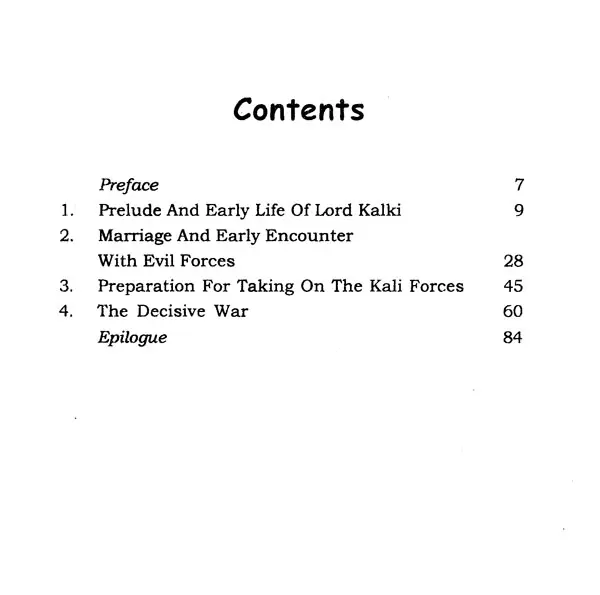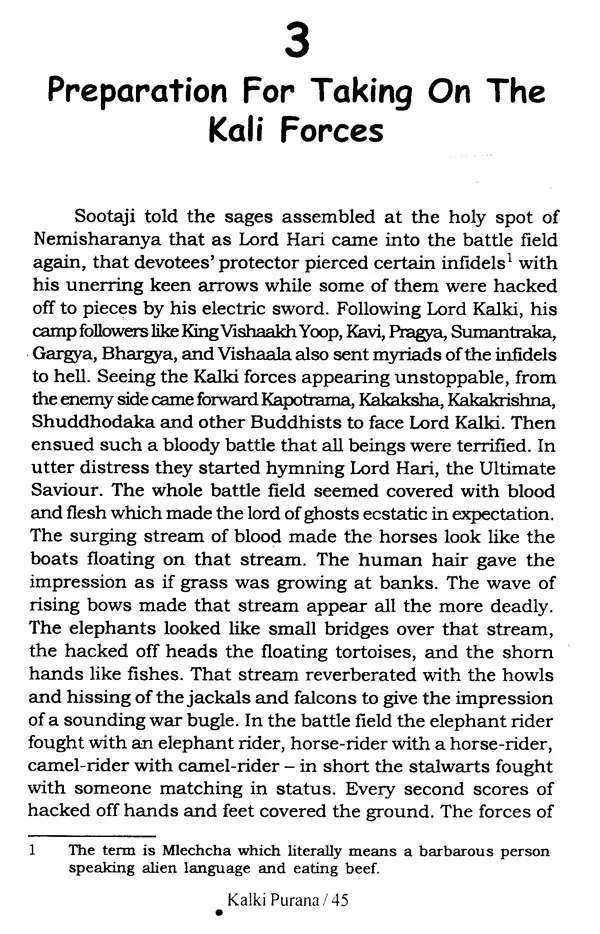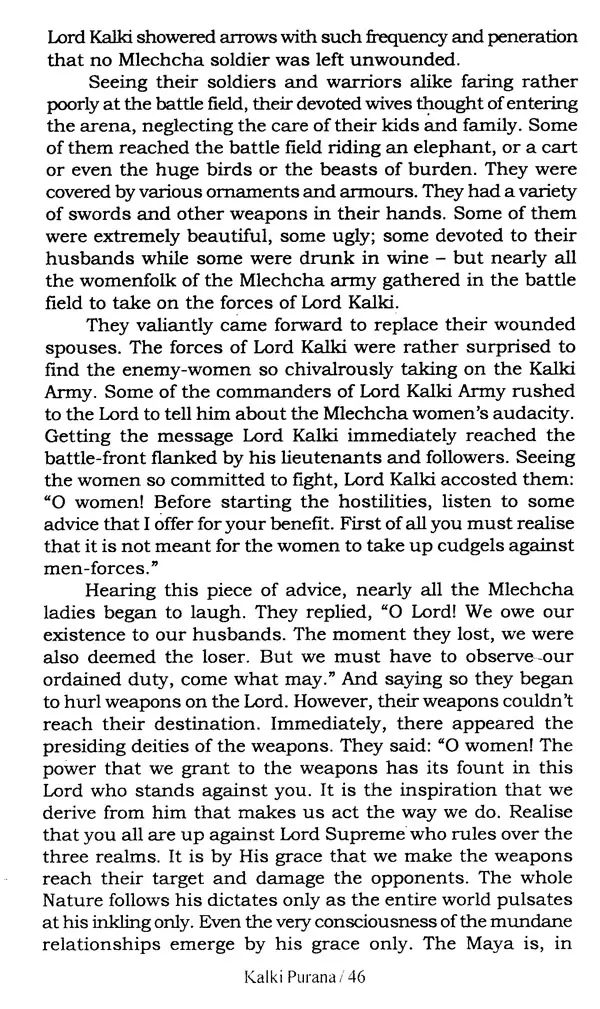
Kalki Purana
Book Specification
| Item Code: | UAJ883 |
| Author: | B. K. Chaturvedi |
| Publisher: | Diamond Pocket Books Pvt. Ltd. |
| Language: | English |
| Edition: | 2020 |
| ISBN: | 8128805886 |
| Pages: | 88 |
| Cover: | PAPERBACK |
| Other Details | 8.50 X 5.50 inch |
| Weight | 130 gm |
Book Description
Puranas literally mean something ancient and particularly they refer to the ancient records. In fact in the absence of the tradition of keeping historical records in a chronological order in ancient India, these Puranas emerge as important documents. They, in an allegorical manner, reveal the basic values that have been ingrained in a particular race or faith, apart from other social Indian details of the eras gone by. In every cycle of time, the Hindu Scriptures claim, there occurs a Vedavyas who edits, vets, compiles and even writes these Puranas with unbiased objectivity. Every one is not entitled to do this job. Vedavyas is supposed to be the most learned, experienced and enlightened person of the Age. As the name suggests the term Vedavyas' itself means someone who is like a diameter if the entire knowledge i.e. Vedas are likened to a circle. This actually means the most learned person of the age. It could be more than one. In fact all the Puranas, the Mahabharata, Srimad Bhagwata etc. that are supposed to have been written by one Vedavyas may have been written or compiled by many Vedavyases and perhaps the last one, Krishna Dweipayana, may have been the last one to edit them. As the historical records claim apart from what Vedvyas (Krishna Dweipayana) might have done, the last time it was duly edited and compiled was in the 5th-6th A.D. under the Gupta Reign which is said to be the golden-age of the Indian history. It was perhaps then that the need was felt to write this Purana, called Kalki Purana. Hence the doubt about its authenticity as it is not listed in the standard eighteen Puranas, simply because it was not written by that Vedavyas as it was composed much later. Nevertheless it also reveals the determination of the faith to strengthen its psychological composure at a period when attacks from the alien forces had restarted, almost a millennium after Alexander's invasion. Moreover, as the text itself suggests it must have been written when the Buddhist rulers were in power and the `Mlechcha' invasions had started taking place. Hence the repeated reference of the two groups of the people described as adversary.
Nevertheless, Kalki Purana, though it is one of the Upapuranas has its own importance. Although according to the Mahabharat, incarnation of Kalki is yet to take place, this Upapurana describes his doing in the past tense. Also, by certain description of Lord Kalki, it is apparent that it has borrowed heavily from Vishnu-Purana and the Srimad Bhagwata Purana. At times the description of the story of Lord Kalki's marriage with the princess of Srihala Dweep, Padma, throws the images also conjured up in the Medieval Hindi epic Padamavata' by Malik Mohammad Jayasi. May be the latter was influenced by this Purana. But that clearly reveals that this Wand Upapurana' did exist in and around 14th century A.D. when Jayasi wrote his above-mentioned magnum opus.
It has been the endeavour to keep the narration interesting. Hence some of the prayers, ovations or hymns have been included in the essence-translation form.
Lastly, the compiler is very grateful to Sri Narendra Kumar of Diamond Pocket Books for allowing him to do this work freely and rationally.
**Contents and Sample Pages**











